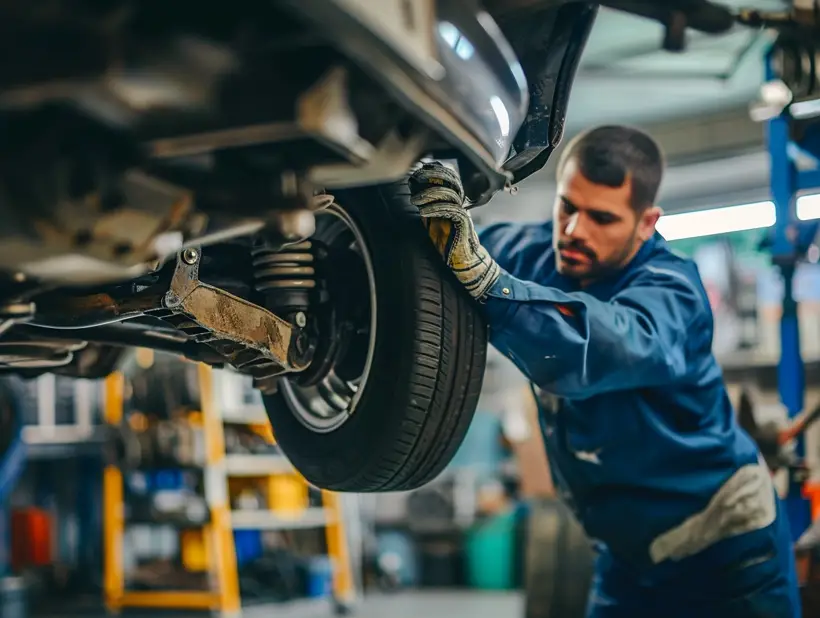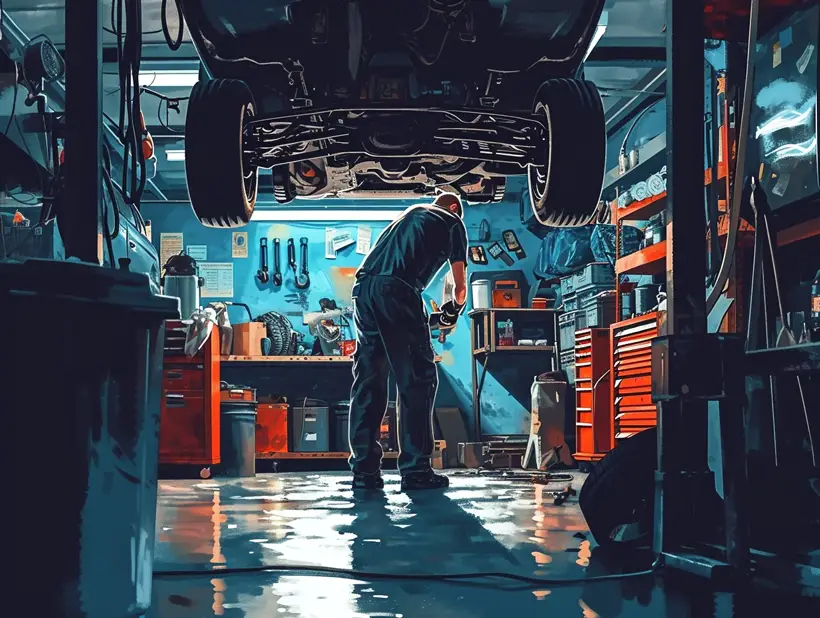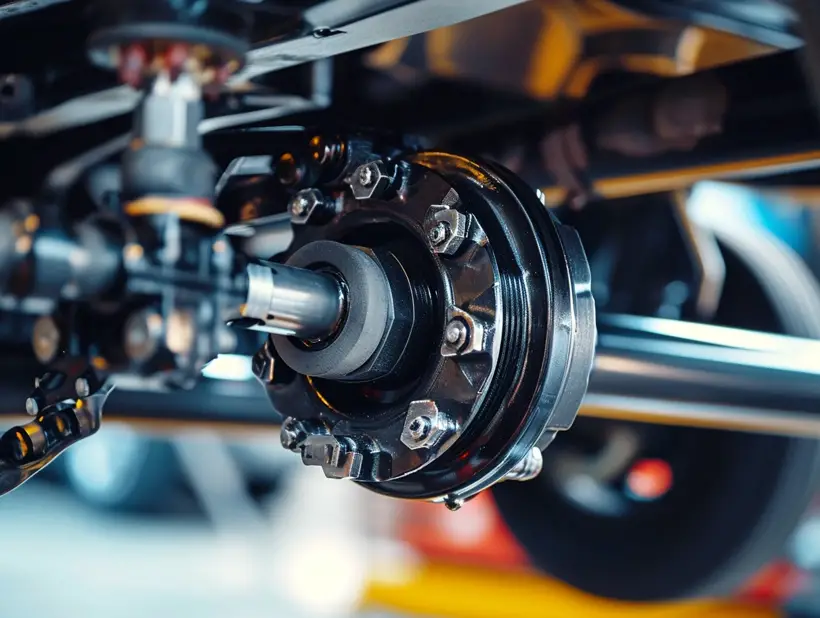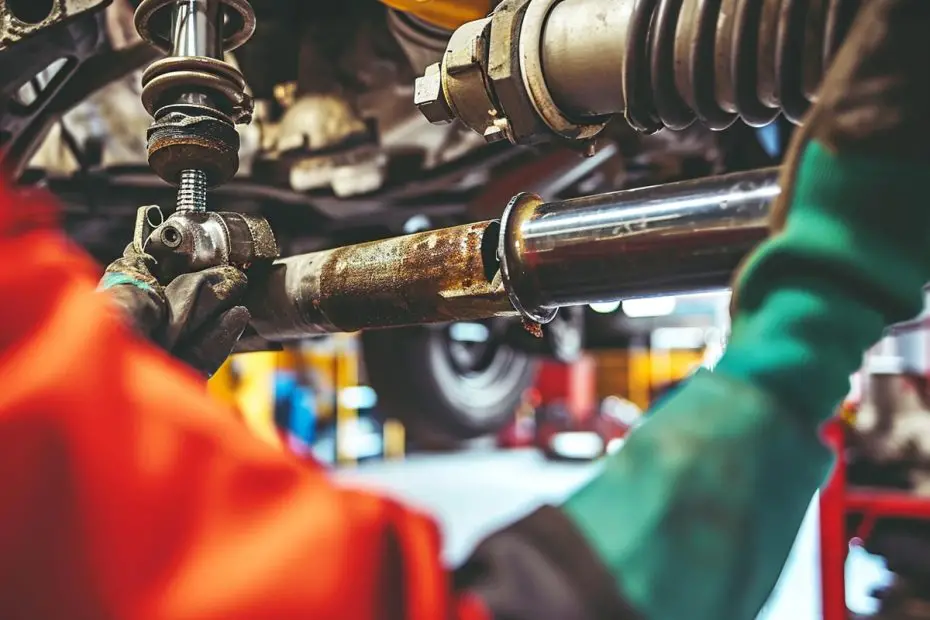If you’ve ever heard strange noises coming from your car while turning or accelerating, it’s possible that you have a problem with your CV joints. These important components, known as Constant Velocity (CV) joints, play a crucial role in transmitting power from the transmission to the wheels, while allowing for smooth and flexible movement. However, over time, CV joints can wear out and develop issues that result in noticeable noise. In this article, we’ll explore the common signs of bad CV joints and how to diagnose them accurately. So, let’s dive in and uncover the mystery behind CV joint noise!
When it comes to diagnosing bad CV joints, it’s essential to pay close attention to the sounds your car makes. If you hear a clicking or popping noise when turning, especially during low-speed maneuvers, it’s a strong indication of worn-out CV joints. These noises are often caused by damaged or worn-out CV joint boots, which allow dirt and moisture to enter and damage the joint’s internal components. By understanding the different types of CV joint noise and their causes, you can take the necessary steps to address the issue promptly and ensure the safety and performance of your vehicle. So, let’s explore the various sounds that could signal CV joint problems!
Signs of Bad CV Joints

Signs of Bad CV Joints
We know how frustrating it can be when your car starts making strange noises. As car owners ourselves, we understand the importance of promptly identifying and addressing issues to ensure the safety and performance of our vehicles. In this section, we will discuss the common signs of bad CV joints and how to accurately diagnose them.
- Clicking or Popping Sounds: One of the most common indications of worn-out CV joints is a clicking or popping sound, especially during low-speed maneuvers such as making a tight turn or reversing. These noises should not be ignored, as they can signal an issue with the CV joints.
- Vibrations: If you notice an unusual vibration, particularly while accelerating or turning, it could be a sign of worn-out CV joints. CV joint vibrations are often more pronounced at higher speeds and can indicate a problem with the joint’s internal components.
- Grease Leakage: Another sign of CV joint problems is the presence of grease around the wheel or axle. Worn-out CV joint boots can allow dirt and moisture to enter, causing damage to the joint’s internals. If you notice grease on the inner or outer edges of the wheel, it is essential to have your CV joints inspected.
- Axle Clicking: In some cases, a damaged or worn-out CV joint can cause an audible clicking noise from the axle shaft. This noise is typically more apparent when the car is in motion and can be an indication that the CV joints are in need of attention.
- Limited Range of Motion: If you experience difficulty in steering or notice that the wheels are not turning as smoothly as they used to, it could be a sign of CV joint issues. Damaged CV joints can restrict the range of motion in the wheels, affecting the overall handling of the vehicle.
- Uneven Tire Wear: Paying close attention to your tire wear patterns can give you valuable insights into the condition of your CV joints. If you notice uneven tire wear, particularly on the front tires, it may suggest that the CV joints are not operating correctly.
By recognizing these signs of bad CV joints early on, you can prevent further damage and costly repairs. If you suspect an issue with your CV joints, we recommend having your vehicle inspected by a qualified mechanic to accurately diagnose the problem.
Understanding CV Joint Noise
When it comes to diagnosing bad constant velocity (CV) joints in your car, understanding CV joint noise is crucial. These noises can serve as strong indicators of worn-out CV joints that require immediate attention. In this section, we will delve into the various types of CV joint noise and what they might signify.

1. Clicking or Popping Noises
One of the most common signs of bad CV joints is the presence of clicking or popping noises, particularly during low-speed maneuvers such as turning or reversing. These noises often occur when the CV joint’s internal components are damaged due to worn-out or torn CV joint boots. These boots, responsible for protecting the joint and keeping it lubricated, can allow dirt and moisture to enter, leading to accelerated wear and damage.
2. Vibrations
Another indication of problematic CV joints is the presence of vibrations while driving, especially at higher speeds. These vibrations may manifest as a shaking sensation in the steering wheel or the vehicle’s floor, indicating that the CV joints are no longer functioning optimally. Ignoring these vibrations can lead to further damage and potentially more costly repairs.
3. Grease Leakage
If you notice grease on the inside edge of your wheels or the surrounding areas of the CV joints, it could be a sign of a CV joint problem. Grease leakage occurs when the CV joint boots are damaged, causing the lubricant to escape and leaving the joint vulnerable to friction and internal damage.
4. Axle Clicking
In some cases, a worn-out CV joint may result in a distinct clicking sound coming from the front wheels or axles. This clicking noise tends to increase in frequency and intensity as the CV joint deteriorates further. It is important not to ignore this sound, as continued driving with a damaged CV joint can lead to more severe issues, such as complete joint failure.
5. Limited Range of Motion and Uneven Tire Wear
You may also notice a limited range of motion when turning the steering wheel, indicating compromised CV joints. Damaged CV joints can restrict the smooth movement of the axle, hindering the vehicle’s maneuverability. Additionally, pay attention to any unusual or uneven tire wear, as it can be an indirect sign of CV joint problems.
Clicking or Popping Noise when Turning
One of the most common signs of a bad CV joint is a clicking or popping noise while turning the vehicle. If you hear this noise, especially during low-speed maneuvers, it’s a strong indication that you have a worn-out CV joint.
Why does this noise occur? When the CV joint boots become damaged or worn out, dirt and moisture can enter the joint’s internal components. This can cause the joints to become dry or lose lubrication, leading to friction and wear. As a result, you may hear a clicking or popping noise when you turn the steering wheel.

It’s important to note that not all clicking or popping noises during turning are a result of bad CV joints. It’s crucial to accurately diagnose the issue to avoid unnecessary repairs. Here are some possible causes of clicking or popping noises while turning:
- Worn CV joint: The constant wear and tear of the joint’s components can cause the joint to become loose, resulting in the clicking or popping noise.
- Damaged CV joint boots: If the CV joint boots are torn or cracked, they will no longer be able to keep dirt and moisture out. This can lead to the joint becoming damaged, causing the noise.
- Lack of lubrication: If the joint lacks proper lubrication, it can create friction and noise during turns.
- Loose or damaged suspension components: Faulty suspension components, such as ball joints or tie rod ends, can also produce similar clicking or popping noises.
How to diagnose the issue? If you’re experiencing clicking or popping noises while turning, it’s recommended to have your vehicle inspected by a qualified mechanic. They will be able to accurately diagnose the problem and determine if it is indeed due to a bad CV joint. This will prevent further damage and potentially costly repairs.
Remember, being aware of the signs of bad CV joints, such as clicking or popping noises while turning, can help you address the issue promptly and prevent further damage to your vehicle. Don’t hesitate to consult a professional if you suspect a problem with your CV joints.
Causes of CV Joint Noise
When it comes to diagnosing CV joint issues in our cars, one of the most common signs we encounter is the presence of noise. Identifying the causes of this noise is crucial in understanding the status of our CV joints and taking appropriate action. Let’s explore some of the main factors that can contribute to CV joint noise:
- Damaged or Worn CV Joint Boots: CV joint boots act as protective covers, keeping dirt and moisture out of the joint’s internal components. Over time, these boots can become damaged or worn, compromising their ability to keep out contaminants. When dirt and moisture enter the joint, they can cause friction and eventually lead to noise during vehicle maneuvers.
- Lack of Lubrication: Proper lubrication is vital for the smooth operation of CV joints. It helps reduce friction and wear, ensuring that the joints function optimally. In some cases, a lack of lubrication can result from a torn or damaged CV joint boot, which exposes the joint to the elements.
- Worn CV Joints: Like other parts in our cars, CV joints can experience wear and tear over time. When the joints become worn, they can produce clicking or popping noises, especially during turns. This is often a sign that the joint is no longer able to function properly due to the damage it has sustained.
- Loose or Damaged Suspension Components: While CV joints are often the primary culprits of noise, it’s important to consider other potential causes. Loose or damaged suspension components, such as ball joints or control arms, can also lead to noise during vehicle maneuvers. These components play a critical role in maintaining the stability and smoothness of our car’s ride, so any issues with them can result in additional noise.

Taking note of these potential causes of CV joint noise can help us diagnose the underlying issue accurately. If we find ourselves experiencing these noises, it’s crucial to have our vehicle inspected by a qualified mechanic. Proper diagnosis by a professional can save us from unnecessary repairs and prevent further damage to our car’s CV joints.
Remember, identifying the signs of bad CV joints, such as clicking or popping noises during turns, is essential for maintaining the health of our car’s drivetrain system. By being proactive and addressing these issues promptly, we can avoid costly repairs and keep our car running smoothly on the road.
Steps to Address CV Joint Noise
If you’ve been experiencing strange noises coming from your vehicle while turning, it could be a sign of bad CV joints. Addressing the issue promptly can help you avoid costly repairs down the line. Here are some steps to take if you suspect your CV joints may be the culprit:
1. Inspect the CV Joint Boots: Start by visually inspecting the CV joint boots. Look for any cracks, tears, or other signs of damage on the boots. Damaged boots can allow dirt and moisture to enter the CV joint, leading to wear and noise. If you notice any issues with the boots, it’s recommended to have them replaced as soon as possible.
2. Check for Lack of Lubrication: Proper lubrication is essential for the smooth operation of CV joints. Inspect the boots to ensure they are properly lubricated. If you notice any signs of dryness or lack of grease, it’s important to add lubrication to the joints. Consult your vehicle’s manual or reach out to a qualified mechanic for guidance on the correct lubricants to use.
3. Evaluate Suspension Components: Loose or damaged suspension components can also contribute to CV joint noise. Check for any play or looseness in the suspension system, including the control arm, ball joints, and tie rod ends. If you notice any excessive movement or wear, it’s advisable to have these components inspected and replaced if necessary.
4. Seek Professional Diagnosis: If you’ve performed the above steps and are still experiencing CV joint noise, it’s best to consult a qualified mechanic. They have the expertise and specialized tools to accurately diagnose the issue and determine whether it’s the CV joints or another component causing the noise. Professional diagnosis ensures that any necessary repairs are done correctly and promptly, saving you time and money in the long run.
Remember, addressing CV joint noise early can prevent further damage to your vehicle’s drivetrain and save you from expensive repairs. So, if you suspect an issue with your CV joints, don’t delay in taking the necessary steps to diagnose and address the problem.
CV joint noise can be a frustrating issue, but with the right steps, you can tackle the problem head-on and keep your car running smoothly.
Conclusion
Addressing CV joint noise in a timely manner is crucial to prevent further damage and costly repairs. By understanding the common signs of bad CV joints and accurately diagnosing the issue, you can take the necessary steps to resolve the problem.
One of the most noticeable signs of a bad CV joint is a clicking or popping noise while turning the vehicle, especially at low speeds. This noise is often caused by damaged or worn-out CV joint boots, which allow dirt and moisture to enter the joint’s internal components. However, it’s important to note that other factors, such as lack of lubrication or loose/damaged suspension components, can also contribute to similar noises.
To address CV joint noise, start by inspecting the CV joint boots for damage and checking for lack of lubrication. Additionally, evaluate the suspension components for looseness or damage. If the issue persists, it’s recommended to seek professional diagnosis from a qualified mechanic.
By taking these steps, you can ensure the longevity and optimal performance of your vehicle’s CV joints, avoiding unnecessary repairs and maintaining a smooth and safe driving experience.
